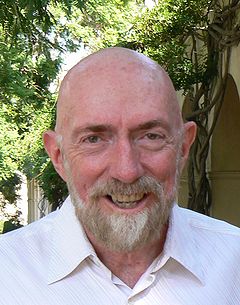Recently, a new show has appeared on “The Discovery Channel” called “Smash Lab”. The premise of the show is simple: four smart people – an engineer, an “ideas guy”, a scientist, and a designer – get together and try to approach real-world problems with innovative technology. For instance, using carbon-fiber wrap to hurricane-proof a mobile home, or using softened concrete to slow down a run-away highway vehicle. I’m impressed by all of the problems so far posed; the hurricane-proofing of mobile homes was particularly interesting, given how many of these homes are in the path of hurricanes along the coastal United States.
However, several things about the show have bothered me, as a scientist. The pilot episode exemplifies my concerns, though I will say that I’ve become more impressed with the discipline of the team as the show has progressed. In the first episode, the team tries to slow down run-away cars and buses using an easy-crumble concrete. This concrete is already used on some airport runways to slow down and stop run-away planes. The concrete crumbles more easily, absorbing the energy of a collision gradually to reduce the instantaneous forces on passengers inside the vehicle.
The team tried several ideas, including changing normal concrete road barriers into softened barriers, or putting a surface of the crumbly concrete in the median so that a vehicle crossing the median slows and stops before hitting on-coming traffic on the other side of the highway. Despite their effort, the ideas were all miserable failures. That’s fine – science is about failure, and learning from failure, to achieve success. However, the team seemed to declare victory at the end. Why? Well, they all failed to stop a car. However, they were able to slow-down a bus crossing the median on the crumbly surface.
What bothers me about this is that the team redefined success at the end of the experiment, allowing them to declare a victory. Cars are far more common on U.S. highways than buses, and so therefore the probability of a fatal accident from a run-away car is far higher than from a bus. The failure of the experiment to stop a car without killing the passengers, or without actually stopping the car, amounts to a failure in the bulk of the cases in which this technology could be tested. Succeeding in stopping a bus is good, and dramatic, but hardly more important than stopping a car.
The team should have admitted defeat. In fact, they’ve done so in a later episode when they failed to fully protect a mobile home from a hurricane, or even when they failed to save a car on railroad tracks from a deadly train strike. That’s good science. But in the pilot, the lead episode of the show, they redefined success at the end so they had something good to claim.
Failing to meet the goals of an experiment can be just as useful as finding success. Perhaps collapsable concrete is a bad technology, one which cannot or should not be adapted to solve the problem of a run-away car. Declaring some measure of victory, using a smaller part of the overall problem as the basis of the claim, can prolong the life of a failed technology. It would be better to spend innovation on a better idea than try to pump up a bad one. That’s an important aspect of science.
I’m growing to like Smash Lab. The earthquake-proofing of a house with ball-bearings was swank, something I think should be adapted to normal house construction. But the concrete barrier should have been something abandoned by the team as a bad idea. It’s a shame they couldn’t proudly accept defeat, instead of redefining success just to achieve it.



2 thoughts on “Smash Lab and the Scientific Method”
Obxkcd: http://www.xkcd.com/397/
On mythbusters, but it features Zombie Feynman! My new favorite comic.
Unfortunately I’m geographically disconnected from “Smash Lab”, but I did recently see a UK show called “Brainiac” that just about made me pull my hair out. It’s run by a bunch of actors who have about as much idea of science as my toenails, and involves such inane experiments as “which part of the body hurts the most when pinched” involving some poor git being subjected to clamps on various parts of the body. Another one was: if I jump in a falling elevator just before it hits the ground, will I be saved? After smashing a wood box (sample size: 1, and they didn’t time the jump for shit) and a lot of fruit, and explaining NONE of the relevant physics of free-fall, they decided no, and proudly proclaimed themselves science-y.
Such a failure after the fantastic UK show “Junkyard Wars”.
Oh, Zombie Feynman – why you got to be so cold to our p-brane physicists?
I’m glad you mentioned “Junkyard Wars” – how I miss that show! The British version was supreme, the American version was OK. I wish the British version would come back!